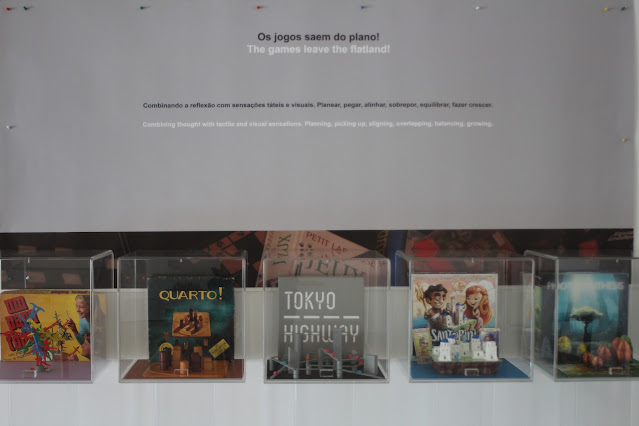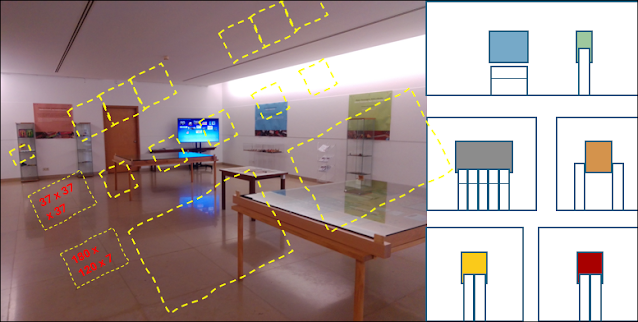
Six. Just about the age of the first experiences and memories with board games, that have been preceded by other games, those of colours and shapes, words and numbers, paper and pencil, pieces and dice.
Sixty. Years with games. Years of games. Discovering, learning, explaining, experimenting. In family, always. With friends. With those met for the first time around a game table, in any city, regardless of borders.
Six. The years of this blog. Years of discovery. Groups and conventions, people who imagine games before they become one, the different roles hidden behind a game box, the industry that brings games to our tables.
Sixty minus six. An essay on the years before the blog, written for issue 3 of the fanzine Joga Forte, one of the many initiatives of ARTMATRIZ, Cultural and Artistic Association. A fitting way to mark this date. Here it is, adapted from the original version.
From the hobby to the industry
Games. Always. For as long as I can remember. From around the time of the first human footstep on the moon. It runs in the family! Dexterity games, such as the nail or the five stones during long beach afternoons. A Mikado over the table. Bottlecap races in makeshift circuits. The teetotum spinning round and round, between luck and bad luck. Playing with words, as in the Americano and the Stop. Making deductions with paper and pencil, in naval battles of still ships. Playing with cards, in the Battle, Burro, Bisca, or Sueca. Questions and answers, with O Sabichão. And the first board games, such as Vamos às Compras (Let's Go Shopping), or A Volta ao Mundo (Around the World).
The offer was scarce in Portugal, back in the 1970s, and consisted mainly of games published by Majora and later Karto, the leading Portuguese publishers at that time. Titles such as Monopoly, Table Soccer, Formula 1, Munique 74, Bolsa (Stock Exchange), Petróleo (Oil), As Eleições e os Partidos (The Elections and the Parties), or Hóquei em Patins (Roller Hockey), make their way to the table, at home or at friends' homes. I would create games that did not exist, using game parts, Lego components, maps and dice. Soloing multi-handed. The small pieces taking on a life of their own to replace the absent players. A different world in every game!
The abstract games were beginning to reclaim their own space, mainly thanks to chess. So much strategy behind such simple rules! Then, came the competition play, and that lasted for decades, with varying intensity, but that's a different story.
Back then, time flowed at a different pace and the summer holidays lasted three months! Plenty of time, a shortage of games, and a regular partner like Eduardo were the right ingredients to explore our games to the limit and beyond. Simulating championships, the great cycling tours, or campaigns. Introducing asymmetric play so that real-world characters would tell the story while we acted as mere facilitators and spectators. Every play meticulously recorded in small notebooks.
Games that were of a 'different' kind usually arrived from abroad, from Spain for example, in that era before Portugal entered the EEC. The first truly complex games, in the form of the first military recreations. Panzerblitz, Operation Barbarossa, Air Force, and later the tense negotiations of Diplomacy.
Around that time, I also discovered the games with miniatures, thanks to a magazine named História (History), which contained a section, authored by Victor Amorim, with rules for recreating tactical combats of the Second World War with 1/72 miniatures.
But it was another magazine, the French Jeux & Strátegie, that opened so many more windows! It arrived every two months at a kiosk well in the heart of Guimarães' historic centre, A magazine with the latest news from markets that were still inaccessible. Articles on games of all kinds, from board games to role-playing games, from calculating machines (!) to the first personal computers, from theory and strategy analysis to puzzles and labyrinths. And always with a centerfold original game, to detach, cut and glue the counters, and... to play! The stuff dreams were made of...
The 1990s were marked by an increase in the number of other players at home, which rose to three 😊. It was also marked by trips abroad, which allowed increased access to ‘other’ games, adding to the ones we already had. Places like L'Impensé Radical, next to the Luxembourg Gardens, or Jeux Descartes, both in Paris, or a store in central London (was it Just Games?). Civilisation, Ace of Aces, Speed Circuit, Squad Leader, Catan, Go, Mancala, Quarto.
By the turn of the millennium, the time for games had substantially decreased, although the collection continued to grow, slowly. Carcassonne, Alhambra, Keltis. Yet, I didn't realise, at all, that a revolution was taking place in my lifelong hobby...
It wasn't until 2018, when I decided to create this blog with texts and photographs about ‘my’ games, and was looking for ways to publicise it, that I discovered the 'new' reality of board games. Social media groups, dedicated websites, crowdfunding platforms, local meetings and conventions, content producers, creators, the whole industry. People. Lots of people. Accessible. With names. A far cry from the days when you only played with acquaintances and game boxes displayed the publisher's name only.
That was shortly followed by attending my first convention, InvictaCon 2018 (Gondomar, Portugal) and the meetings of the Boardgamers of Aveiro. And it took no more than another small step until engaging in the first translation of a rulebook, for the game Whales Destroying the World, by the Czech company TimeSlugStudio.
I was not yet fully aware that I was moving towards the industry. But the stars were gradually aligning. Vaguely and imprecisely. Very much in line with the motto chosen for the blog: Wandering in the land of games! Well, that's material for a second chronicle.
Until then, happy gaming!



















